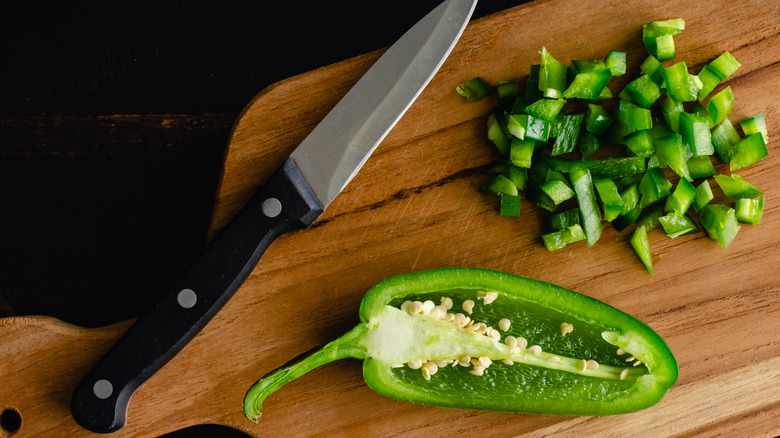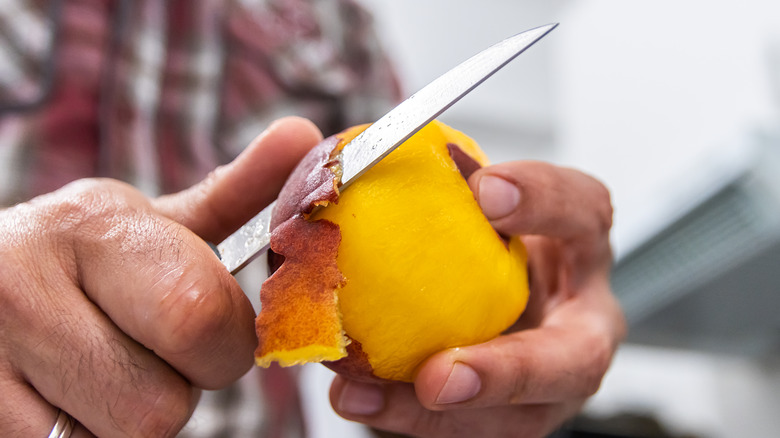Are You Actually Using A Paring Knife The Right Way?
Some home cooks reach for their eight-inch chef's knife for almost every task. Sturdy yet nimble, the knife feels familiar and can slice and dice just about any food thrown onto your cutting board. But your basic blade arsenal shouldn't end there; there's a second, smaller side-kick perfect for tasks requiring delicate precision. The paring knife, so often forgotten or misused, is a true kitchen essential. Practical for everything from trimming produce and scoring cakes to removing vegetable membranes, it's often worthwhile to consider setting aside your trusty chef's knife in favor of its smaller sibling.
CookingLight praises the paring knife for its small handle and the close distance to the tip, which the outlet explains allows it to become almost an "extension of your hand." About half the size of a chef's knife or smaller, Cook's Illustrated recommends selecting a paring knife with a length of around three inches. Such a size provides the agility you're searching for, without becoming too small, allowing your knife to retain its usefulness for multiple applications. Consider one often noted paring knife use: deveining shrimp. The task can be cumbersome with a chef's knife, as it's easy to cut too deeply into the seafood. However, carefully and steadily slide the tip of your paring knife along the spine, and the vein comes out easily.
If you've never used a paring knife before it would be easy to assume you should treat it exactly like a chef's knife — but this would be a mistake.
Tips for using a paring kinfe
Over at Serious Eats, cookbook author J. Kenji López-Alt tested out a few different paring knife shapes (yes, there is more than one option). He recommends an entirely straight blade, called a sheep's head, that will come into complete contact with the cutting board. Since paring knives are all about precision — delicately slicing a cherry tomato or chopping garlic into thin slivers — López-Alt says it is better if the blade doesn't rock back and forth.
This almost surgical-like exactness is why you should never mimic the techniques of a chef's knife. Don't cut big veggies like squash or chop through chunks of meats — especially with bones. There shouldn't be any rhythmic slicing; instead, Shanzu Chef explains detailed, considered motions are key. The knife's sharpness is vital, so make sure to keep your paring knife razor-edged.
Since nimbleness is a key attribute of the paring knife, the way you hold your knife is also paramount. Grip the handle of your paring knife with three or four fingers and use your thumb to support whatever you're cutting or peeling. Cook's Illustrated demonstrates how to properly use a paring knife for niche applications: segmenting citrus, peeling tomatoes, and preparing spareribs, for example.
Precise tasks pop up in the kitchen frequently, and using the correct knife the correct way will make your prep a lot easier.

